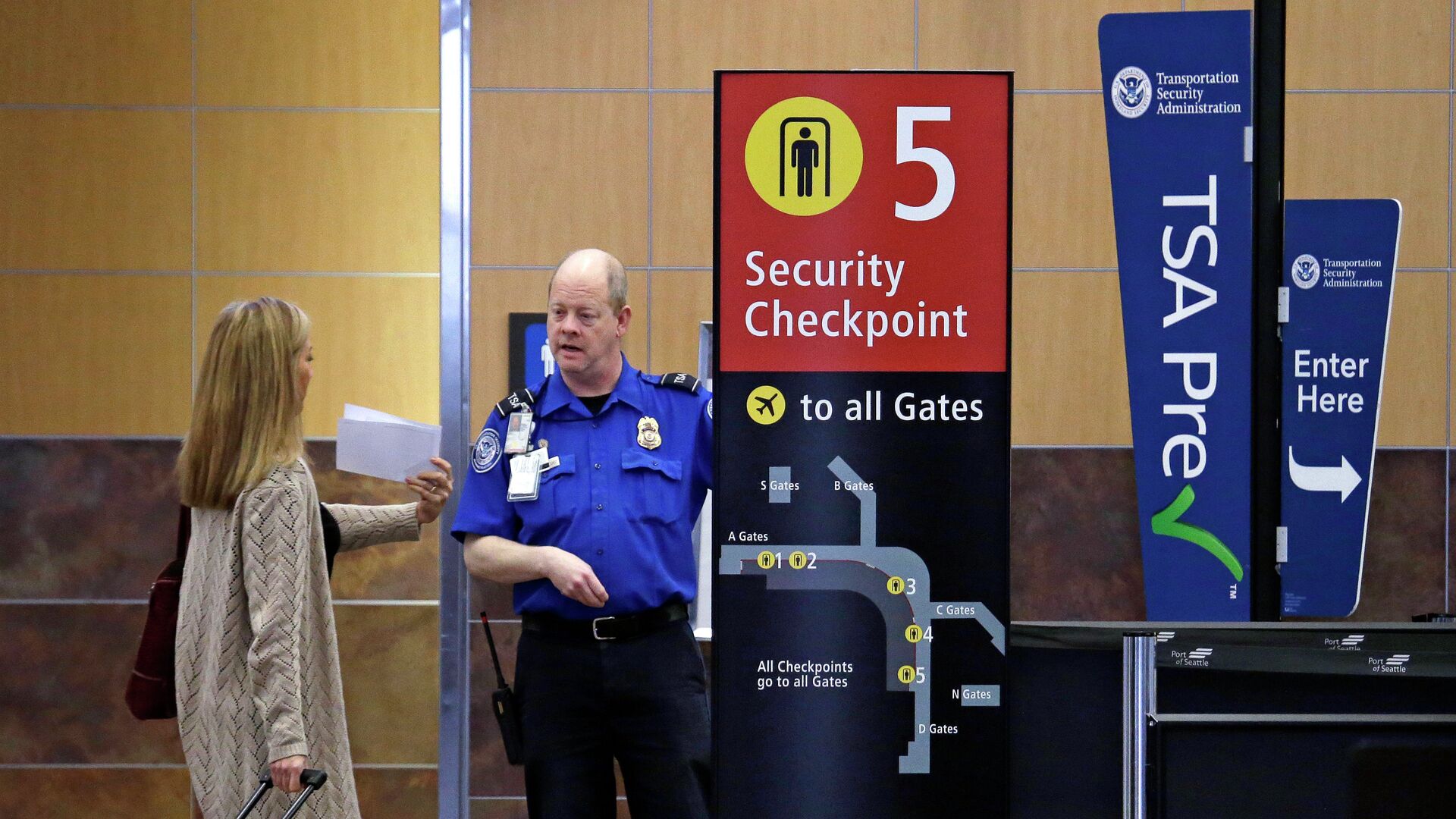US Department of Homeland Security to End Practice Singling Out Transgender Travelers for Searches
23:51 GMT 04.04.2022 (Updated: 13:29 GMT 06.08.2022)

© AP Photo / Elaine Thompson
Subscribe
On US President Joe Biden’s first day in office, he reversed many rollbacks on LGBTQ rights via executive order. However, in the 16 months since, Republicans have rushed to pass dozens of new state-level laws limiting LGBTQ rights and especially transgender rights.
The Biden administration has unveiled new travel standards designed to minimize the harassment to which transgender travelers have been routinely subjected, including new passport identification options.
The Transportation Security Administration (TSA), part of the Department of Homeland Security (DHS), announced on Thursday that it would change its screening processes to be more gender-neutral. For example, it will update the imaging technology on body scanners at airport checkpoints, will no longer use gendered information for validation identity or for body scans, and will not subject travelers to pat downs in a “sensitive area.”
"DHS is committed to protecting the traveling public while ensuring that everyone, regardless of gender identity, is treated with respect," DHS Secretary Alejandro Mayorkas said in a statement. "The new measures announced today are part of a whole-of-government effort to promote equity and inclusion in all our programs and processes."
The changes were announced on March 31, which in the United States is commemorated as the Transgender Day of Visibility, a day to promote inclusivity and oppose discrimination against the trans community. The symbolism is not accidental: transgender travelers have complained for years that the TSA’s security practices unfairly subject them to additional searches and pat-downs, which can be humiliating when the security staff are openly disdainful of their identity.
For example, before Thursday's changes, the body scanners could only be set to male or female, depending on what the TSA agent judged the traveler’s gender to be. Thus, a transgender traveler was likely to set off some kind of “bodily anomaly” warning on their chest or genitals, which TSA agents were required to check out with an invasive search.
Also on Thursday, the US Department of State announced it would begin allowing travelers to indicate their gender as X on US passports, in addition to the F for women and M for men. The plan was initially announced last summer, but the DoS said the option will become available beginning on April 11.
The policy is designed to allow more accurate identification for nonbinary or third gender people, who do not identify as either male or female or who come from cultures that include a distinct third gender, as well as anyone who does not want their gender on their passport. Trans and nonbinary travelers have often complained of increased harassment by authorities who feel their appearance doesn’t match their gender.
A survey by the National Center for Transgender Equality nonprofit found that just 11% of trans Americans have an accurate name and gender marker on all their IDs and records, and that 68% have no IDs showing an accurate name or gender.
According to an estimate by the Williams Institute at the UCLA School of Law, some 17,000 Americans are expected to request passports with an X gender marker each year. The estimate is based on demand for X gender markers on drivers licenses, which some US states already offer. Several US airlines have offered X gender markers for their passengers, as well.
A February poll published by Gallup found that about 0.8% of adult US women and 0.6% of adult US men are transgender; the poll did not ask about nonbinary people. Together, that adds up to about 2.3 million Americans. Trans identification is more common in younger generations than older ones, with 2% of Generation Z adults born between 1997 and 2003 identifying as trans, but just 0.6% of Generation X, born between 1965 and 1980, doing so.


